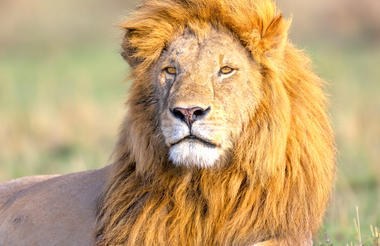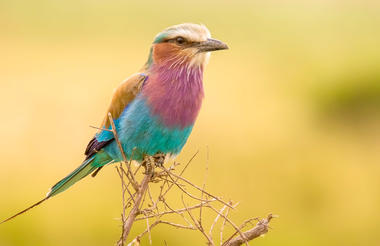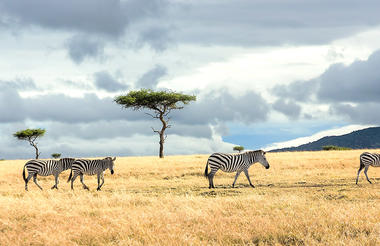Kenya is the most famous destination for safaris in the world for endless reasons, the scenery, the incredible opportunity for viewing all African wildlife in particular the ease in which to see the ‘Big 5’. It is still the best country for adventure travel in Africa; it offers high levels of service; it still offers 'Out of Africa' scenic beauty, diverse cultures and abundant wildlife.
Safari is however, by no means the only reason to visit Kenya, the coastline and tropical beaches are amongst the world’s most beautiful.
Name: The Republic of Kenya
Time Zone: GMT + 3
Capital City: Nairobi, meaning “place of cool waters” in the Maa language
Independence gained on: 12 December 1963 (from Great Britain)
National Language: Kiswahili
Official Language: English
Currency: Kenyan shilling (KES) and cents
Land Area: aprox.586,600km sq
Drives on the: Left
Country Code: + 254
Location
On the Equator on the eastern coast of Africa. Kenya is bordered by Tanzania to the south, Uganda to the west, Somalia and the Indian ocean to the east, Ethiopia to the north and Sudan to the northwest.
Population & People
The population is estimated at 43,500,000 as of 2013.
There are about 52 tribes in Kenya.
Vegetation & Special Natural Features
Kenya is home to the famous Masai Mara game reserve, Mount Kenya and Lake Victoria (the world's second-largest freshwater lake).
The Great Rift Valley, which runs from northern Syria in Southwest Asia to central Mozambique in East Africa, bisects the country from North to South and is dotted with lakes and extinct volcanoes, is one of Kenya's most fascinating physical features.
Kenya’s natural vegetation is diverse. Truly a ‘world within one country’. Tropical rainforests, sandy beaches, snow-capped mountains, desert, wide savannah plains teeming with wildlife, freshwater lakes and salt lakes.
Lewa has its roots in the fact that the Craig family always farmed with the philosophy that there would always be room for wildlife. As the plight of the black rhino became desperate in Africa, the ranch was converted into a rhino sanctuary and today Lewa spans 61,000 acres, and is home to over 11 percent of Kenya’s black rhino population, over 14 percent of Kenya’s white rhino population and the world’s largest single population of Grevy’s zebra. With its proven track record, the Lewa model of community-based conservation development is being spearheaded across northern Kenya, and emulated by other East African conservation organizations. In late June 2013, the World Heritage Committee extended the boundaries of the Mount Kenya World Heritage Site to include Lewa and Ngare Ndare Forest.
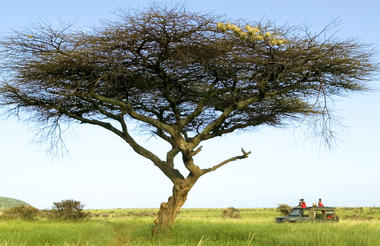
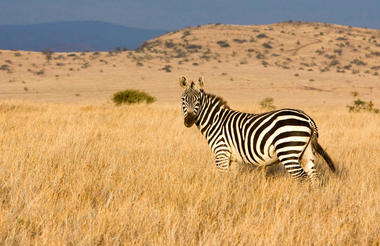
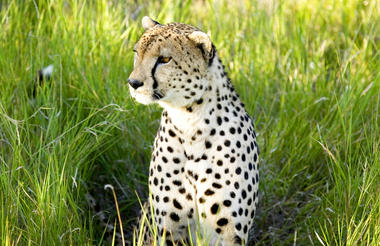
Located in the beautiful Kenya Rift Valley basin, Naivasha is a compact market town northwest of Nairobi, best known as a stopping point for spellbinding Lake Naivasha. Aspiring wildlife photographers and nature lovers will marvel at Lake Naivasha and its abundance of wondrous wildlife. Here visitors can spot wallowing hippo pods, clouds of vibrant birdlife, zebra and various other game. The nearby Lake Oloiden and Oserian Wildlife Sanctuary are great spots for those passionate about wild wonders. Shopping in the bustling town ensures unique souvenirs for mementoes as well as restaurants offering delicious local dishes with every taste in mind. Accommodations ranging from lodges to bed and breakfasts provide great conveniences for travellers looking to explore the area.
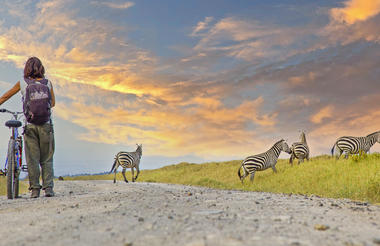
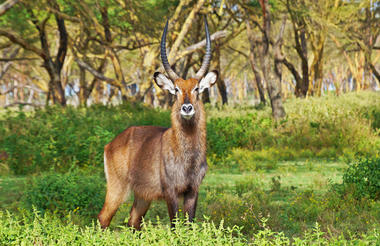
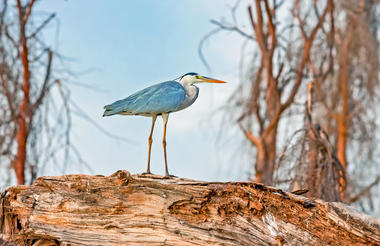
Mara North Conservancy is a beautiful private wilderness area of more than 74,000 acres. It is home to a spectacular array of plants, reptiles, birds and mammals; including elephant, rhino, buffalo, lion, leopard, cheetah and large concentrations of wildebeest, zebra, gazelle and other migratory wildlife. Leopard Gorge, in the heart of the conservancy, is famous as the setting of countless BBC Big Cat Diaries and National Geographic documentaries. Bordering the Masai Mara National Reserve, the conservancy is vital for sustaining the famous Serengeti wildebeest migrations and the highly threatened African wild dog and black rhino.
